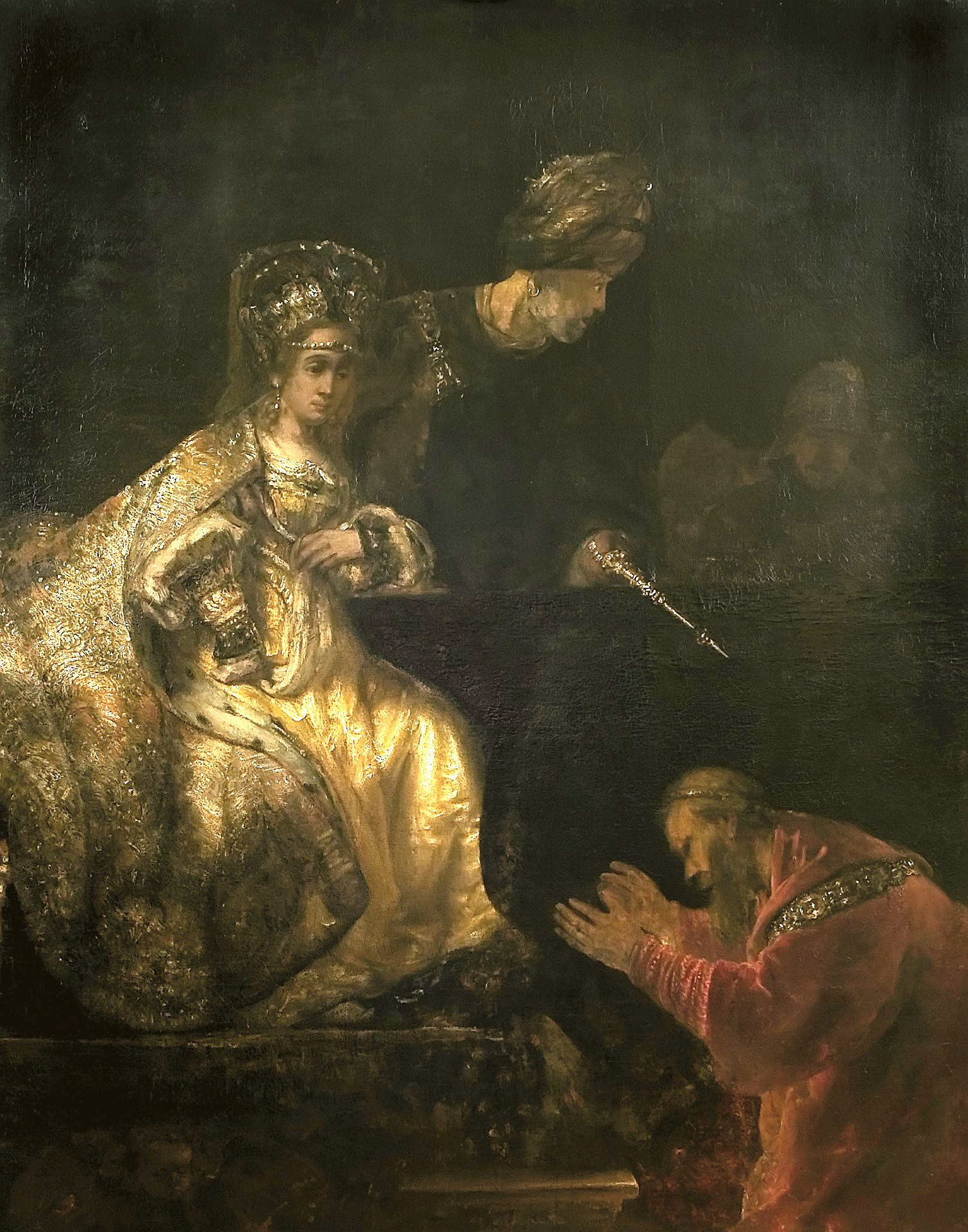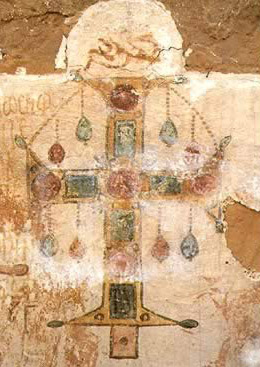|
Daluka
Daluka is the name of legendary queen of Egypt who ruled before the Great Flood according to medieval Coptic and Islamic folklore. She was part of the so-called "Soleyman dynasty", which also included Surid Ibn Salhouk, a king who was once believed to have built the Great Pyramid of Giza. She was sometimes called Zulaikha. Background According to a history of the Arab conquest of Egypt written by Ibn Abd al-Hakam (801–871), Daluka was said to be the builder of the Lighthouse of Alexandria, although the famous Cleopatra was sometimes considered to be the builder instead. Daluka's name was often used synonymously with that of Cleopatra in medieval Arabic texts. Both Daluka and Cleopatra were believed to have built a wall around Egypt to protect it from invasion. This wall was called "Hait-el-Agouz" and a channel was dug behind it. Dalukah was also said to have built a nilometer at Memphis and at least one pyramid in Egypt. German Jesuit scholar Athanasius Kircher (1602&n ... [...More Info...] [...Related Items...] OR: [Wikipedia] [Google] [Baidu] |
1922 Regnal List Of Ethiopia
The 1922 regnal list of Ethiopia is an official regnal list used by the Emperor of Ethiopia, Ethiopian monarchy which names over 300 monarchs across six Millennium, millennia. The list is partially inspired by older regnal lists of Ethiopia, Ethiopian regnal lists and chronicles, but is notable for additional monarchs who ruled Nubia, which was known as ''Aethiopia'' in ancient times. Also included are various figures from Greek mythology and the Biblical canon who were known to be "Aethiopian", as well as figures who originated from Egyptian sources (Ancient Egyptian, Coptic literature, Coptic and Arabic literature, Arabic). This list of monarchs was included in Charles Fernand Rey's book ''In the Country of the Blue Nile'' in 1927, and is the longest Ethiopian regnal list published in the Western world. It is the only known regnal list that attempts to provide a timeline of Ethiopian monarchs from the 5th millennium BC, 46th century BC up to modern times without any gaps. Howe ... [...More Info...] [...Related Items...] OR: [Wikipedia] [Google] [Baidu] |
Egypt
Egypt ( ar, مصر , ), officially the Arab Republic of Egypt, is a transcontinental country spanning the northeast corner of Africa and southwest corner of Asia via a land bridge formed by the Sinai Peninsula. It is bordered by the Mediterranean Sea to the north, the Gaza Strip of Palestine and Israel to the northeast, the Red Sea to the east, Sudan to the south, and Libya to the west. The Gulf of Aqaba in the northeast separates Egypt from Jordan and Saudi Arabia. Cairo is the capital and largest city of Egypt, while Alexandria, the second-largest city, is an important industrial and tourist hub at the Mediterranean coast. At approximately 100 million inhabitants, Egypt is the 14th-most populated country in the world. Egypt has one of the longest histories of any country, tracing its heritage along the Nile Delta back to the 6th–4th millennia BCE. Considered a cradle of civilisation, Ancient Egypt saw some of the earliest developments of writing, agriculture, ur ... [...More Info...] [...Related Items...] OR: [Wikipedia] [Google] [Baidu] |
Haman
Haman ( ; also known as Haman the Agagite or Haman the evil) is the main antagonist in the Book of Esther, who according to the Hebrew Bible was an official in the court of the Persian empire under King Ahasuerus, commonly identified as Xerxes I (died 465 BCE) but traditionally equated with Artaxerxes I or Artaxerxes II. As his epithet ''Agagite'' indicates, Haman was a descendant of Agag, the king of the Amalekites. Some commentators interpret this descent to be symbolic, due to his similar personality. Retrieved 13 February 2017 Etymology and meaning of the name The name has been equated with the Persian name ''Omanes''Encyclopaedia Judaica CD-ROM Edition 1.0 1997, ''Haman'' ( peo, 𐎡𐎶𐎴𐎡𐏁, ) recorded by Greek historians. Several etymologies have been proposed for it: it has been associated with the Persian word , meaning "illustrious" (naming dictionaries typically list it as meaning "magnificent"); with the sacred drink Haoma; or with the Persian name Vohuman, m ... [...More Info...] [...Related Items...] OR: [Wikipedia] [Google] [Baidu] |
Coptology
Coptology is the science of Coptic studies, the study of the Coptic language and Coptic literature.What is Coptology? '''' Origin The European interest in Coptology may have started as early as the 15th century AD. The term was used in 1976 when the First International Congress of Coptology was held in under the title "Colloquium on the Future of Coptic Studies" (11-17 December). This was followed by the establishment of the "[...More Info...] [...Related Items...] OR: [Wikipedia] [Google] [Baidu] |
Ethiopia
Ethiopia, , om, Itiyoophiyaa, so, Itoobiya, ti, ኢትዮጵያ, Ítiyop'iya, aa, Itiyoppiya officially the Federal Democratic Republic of Ethiopia, is a landlocked country in the Horn of Africa. It shares borders with Eritrea to the north, Djibouti to the northeast, Somalia to the east and northeast, Kenya to the south, South Sudan to the west, and Sudan to the northwest. Ethiopia has a total area of . As of 2022, it is home to around 113.5 million inhabitants, making it the 13th-most populous country in the world and the 2nd-most populous in Africa after Nigeria. The national capital and largest city, Addis Ababa, lies several kilometres west of the East African Rift that splits the country into the African and Somali tectonic plates. Anatomically modern humans emerged from modern-day Ethiopia and set out to the Near East and elsewhere in the Middle Paleolithic period. Southwestern Ethiopia has been proposed as a possible homeland of the Afroasiatic langua ... [...More Info...] [...Related Items...] OR: [Wikipedia] [Google] [Baidu] |
Nubia
Nubia () (Nobiin: Nobīn, ) is a region along the Nile river encompassing the area between the first cataract of the Nile (just south of Aswan in southern Egypt) and the confluence of the Blue and White Niles (in Khartoum in central Sudan), or more strictly, Al Dabbah. It was the seat of one of the earliest civilizations of ancient Africa, the Kerma culture, which lasted from around 2500 BC until its conquest by the New Kingdom of Egypt under Pharaoh Thutmose I around 1500 BC, whose heirs ruled most of Nubia for the next 400 years. Nubia was home to several empires, most prominently the Kingdom of Kush, which conquered Egypt in the eighth century BC during the reign of Piye and ruled the country as its 25th Dynasty (to be replaced a century later by the native Egyptian 26th Dynasty). From the 3rd century BC to 3rd century AD, northern Nubia would be invaded and annexed to Egypt, ruled by the Greeks and Romans. This territory would be known in the Greco-Roman world as Dodekasc ... [...More Info...] [...Related Items...] OR: [Wikipedia] [Google] [Baidu] |
Heruy Wolde Selassie
''Ethiopian aristocratic and court titles#Mekwanint, Blatten Geta'' Heruy Welde Sellase (Ge'ez: ብላቴን ጌታ ኅሩይ ወልደ ሥላሴ ''Blatten-Geta Həruy Wäldä-səllase''; 8 May 1878 – 19 September 1938) was a Ministry of Foreign Affairs (Ethiopia), Foreign Minister of Ethiopia and a writer in Amharic language, Amharic. Bahru Zewde observes that his career "stands out as the great success story ... of the early twentieth-century intellectuals," then continues, "His prolific literary record, his influence with Tafari-Hayla-Sellase and his ascent in the bureaucratic hierarchy were all characterized by an unchequered progression. Edward Ullendorff concurs in this evaluation, describing his ''oeuvre'' as "a considerable and distinguished literary output." John Spencer, who met Heruy in early 1936, described him as "a short, rotund, white-haired man ... with a goatee and a café au lait complexion. His corpulent build and backward-leaning stance suggested a Santa ... [...More Info...] [...Related Items...] OR: [Wikipedia] [Google] [Baidu] |
Aethiopia
Ancient Aethiopia, ( gr, Αἰθιοπία, Aithiopía; also known as Ethiopia) first appears as a geographical term in classical documents in reference to the upper Nile region of Sudan, as well as certain areas south of the Sahara desert. Its earliest mention is in the works of Homer: twice in the ''Iliad'', and three times in the ''Odyssey''. The Greek historian Herodotus "specifically" uses the appellation to refer to such parts of sub-Saharan Africa as were then known within the inhabitable world. In classical antiquity, ''Africa'' (or ' Ancient Libya') specifically referred to what is now known as the Maghreb and south of the Libyan Desert and Western Sahara, including all the desert land west of the southern Nile river in North Africa, and not to Sub-Saharan Africa. Geographical knowledge of the continent gradually grew, with the Greek travelogue ''Periplus of the Erythraean Sea'' (1st century AD) describing areas along the Red Sea (Erythraean Sea). Etymology The Gree ... [...More Info...] [...Related Items...] OR: [Wikipedia] [Google] [Baidu] |
Ahmed Kamal (Egyptologist)
Ahmed Kamāl ( ar, أحمد كمال, July 29, 1849 – August 5, 1923, also known as Ahmed Kamal Bey (Pasha)) was Egypt’s first Egyptologist and pioneer in his own country. Kamal was of Turkish origin. Research He trained under the German Egyptologist Heinrich Brugsch. He was a curator at the Egyptian Museum in Cairo and a staff member of the Supreme Council of Antiquities. He was jointly responsible for the Egyptian collections’ classification and significantly involved in the museum's removal from both Boulaq to Giza and Giza to the Tahrir Square at Cairo's city center. He took part in several excavations at Dayr al-Barsha, Gabal at-Tayr, Tihna el-Gebel, Gamhud, Atfih, Mayr, El-Sheikh Sa'id, Asyut, Dara, Amarna as well as in the Nile Valley The Nile, , Bohairic , lg, Kiira , Nobiin: Áman Dawū is a major north-flowing river in northeastern Africa. It flows into the Mediterranean Sea. The Nile is the longest river in Africa and has historically been co ... [...More Info...] [...Related Items...] OR: [Wikipedia] [Google] [Baidu] |
Nimrod
Nimrod (; ; arc, ܢܡܪܘܕ; ar, نُمْرُود, Numrūd) is a biblical figure mentioned in the Book of Genesis and Books of Chronicles. The son of Cush and therefore a great-grandson of Noah, Nimrod was described as a king in the land of Shinar (Mesopotamia). The Bible states that he was "a mighty hunter before the Lord nd... began to be mighty in the earth". Later extra-biblical traditions identified Nimrod as the ruler who commissioned the construction of the Tower of Babel, which led to his reputation as a king who was rebellious against God. Nimrod has not been attested in any historic, non-biblical registers, records or king lists, including those of Mesopotamia itself. Historians have failed to match Nimrod with any historically attested figure. Several ruins of the Middle East have been named after him. Biblical account The first biblical mention of Nimrod is in the Table of Nations. He is described as the son of Cush, grandson of Ham, son of Noah, Ham, and g ... [...More Info...] [...Related Items...] OR: [Wikipedia] [Google] [Baidu] |





.jpg)